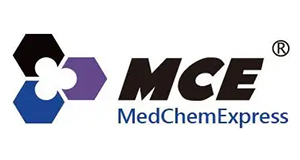Verapamil-d3 (hydrochloride), CAS 2714485-49-9
Verapamil-d3 (hydrochloride), CAS 2714485-49-9
SKU
MEXHY-A0064S-1
Packaging Unit
1 mg
Manufacturer
MedChemExpress
Availability:
loading...
Price is loading...
Product Description: Verapamil-d3 (hydrochloride) is the deuterium labeled Verapamil hydrochloride. Verapamil hydrochloride ((±)-Verapamil hydrochloride) is a calcium channel blocker and a potent and orally active first-generation P-glycoprotein (P-gp) inhibitor. Verapamil hydrochloride also inhibits CYP3A4. Verapamil hydrochloride has the potential for high blood pressure, heart arrhythmias and angina research[1][2][3].
Formula: C27H36D3ClN2O4
References: [1]Russak EM, et al. Impact of Deuterium Substitution on the Pharmacokinetics of Pharmaceuticals. Ann Pharmacother. 2019;53(2):211-216. /[2]Krikler DM. Verapamil in arrhythmia. Br J Clin Pharmacol. 1986;21 Suppl 2:183S-189S./[3]Rehnqvist N,et al. Effects of metoprolol vs verapamil in patients with stable angina pectoris. The Angina Prognosis Study in Stockholm (APSIS). Eur Heart J. 1996 Jan;17(1):76-81./[4]Kubo Y, et al. Blood-to-Retina Transport of Fluorescence-Labeled Verapamil at the Blood-Retinal Barrier. Pharm Res. 2018 Mar 12;35(5):93./[5]Gowarty JL, et al. Verapamil as a culprit of palbociclib toxicity. J Oncol Pharm Pract. 2019 Apr;25(3):743-746./[6]Zhou P, et al. Anti-arrhythmic effect of Verapamil is accompanied by preservation of cx43 protein in rat heart. PLoS One. 2013 Aug 12;8(8):e71567.
CAS Number: 2714485-49-9
Molecular Weight: 494.08
Compound Purity: 99.57
Research Area: Cardiovascular Disease
Solubility: 10 mM in DMSO
Target: Calcium Channel;Cytochrome P450;Isotope-Labeled Compounds;P-glycoprotein
Formula: C27H36D3ClN2O4
References: [1]Russak EM, et al. Impact of Deuterium Substitution on the Pharmacokinetics of Pharmaceuticals. Ann Pharmacother. 2019;53(2):211-216. /[2]Krikler DM. Verapamil in arrhythmia. Br J Clin Pharmacol. 1986;21 Suppl 2:183S-189S./[3]Rehnqvist N,et al. Effects of metoprolol vs verapamil in patients with stable angina pectoris. The Angina Prognosis Study in Stockholm (APSIS). Eur Heart J. 1996 Jan;17(1):76-81./[4]Kubo Y, et al. Blood-to-Retina Transport of Fluorescence-Labeled Verapamil at the Blood-Retinal Barrier. Pharm Res. 2018 Mar 12;35(5):93./[5]Gowarty JL, et al. Verapamil as a culprit of palbociclib toxicity. J Oncol Pharm Pract. 2019 Apr;25(3):743-746./[6]Zhou P, et al. Anti-arrhythmic effect of Verapamil is accompanied by preservation of cx43 protein in rat heart. PLoS One. 2013 Aug 12;8(8):e71567.
CAS Number: 2714485-49-9
Molecular Weight: 494.08
Compound Purity: 99.57
Research Area: Cardiovascular Disease
Solubility: 10 mM in DMSO
Target: Calcium Channel;Cytochrome P450;Isotope-Labeled Compounds;P-glycoprotein

 Deutsch
Deutsch






